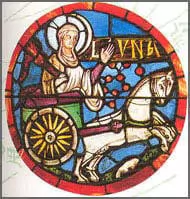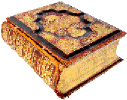
Now that we have described the procedure of prediction about the general states of countries and cities, it would remain to mention matters of greater detail; I refer to events that happen yearly in connection with the seasons. In the investigation of this subject it would be appropriate first to define the so-called new moon of the year. That this should properly be the beginning of the sun’s circular course in each of his revolutions is plain from the thing itself, both from its power and from its name. To be sure, One could not conceive what starting point to assume in a circle, as a general proposition; but in the circle through the middle of the zodiac one would properly take as the only beginnings the points determined by the equator and the tropics, that is, the two equinoxes and the two solstices. Even then, however, One would still be at a loss which of the four to prefer. Indeed, in a circle, absolutely considered, no One of them takes the lead, as would be the case if there were One starting point, but those who have written on these matters have made use of each of the four, in various ways assuming same one as the starting point, as they were led by their own arguments and by the natural characteristics of the four points. This is not strange, for each of these parts has [the] same special claim to being reasonably considered the starting point and the new real. The spring equinox might be preferred because first at that time the day begins to be longer than the night and because it belongs to the moist season, and this element, as we said before, is chiefly present at the beginning of nativities; the summer solstice because the longest day occurs at that time and because to the Egyptians it signifies the flooding of the Nile and the rising of the dog star; the fall equinox because all the crops have by then been harvested, and a fresh start is then made with the sowing of the seed of future crops; and the winter solstice because then, after diminishing, the day first begins to lengthen. It seems more proper and natural to me, however, to employ the four starting-points for investigations which deal with the year, observing the syzygies of the sun and moon at new and full moon which most nearly precede them, and among these in particular the. conjunctions at which eclipses take place, so that from the starting point in Aries we may conjecture what the spring will be like, from that in Cancer the summer, from that in Libra the autumn, and from that in Capricorn the winter. For the sun creates the general qualities and conditions of the seasons, by means of which even those who are totally ignorant of astrology can foretell the future.
Furthermore, we must take into consideration the special qualities of the signs of the zodiac to obtain prognostications of the winds and of the more general natures; and the variations of degree from time to time are in general again shown by the conjunctions which take place at the aforesaid points and by the aspects of the planets to them, and in particular also by the conjunctions and full moons in the several signs and by the course of the planets. This might be called monthly investigation. As it is proper that for this purpose there be enumerated the peculiar natural powers of the several signs to influence annual conditions, as well as those of the several planets, we have already, in what precedes, explained the familiarity of the planets, and of the fixed stars of like temperament, with the air and the winds, as well as that of the signs, as wholes, with the winds and seasons. It would remain to speak of the nature of the signs, part by part.
 AstroLibrary 🔎
AstroLibrary 🔎